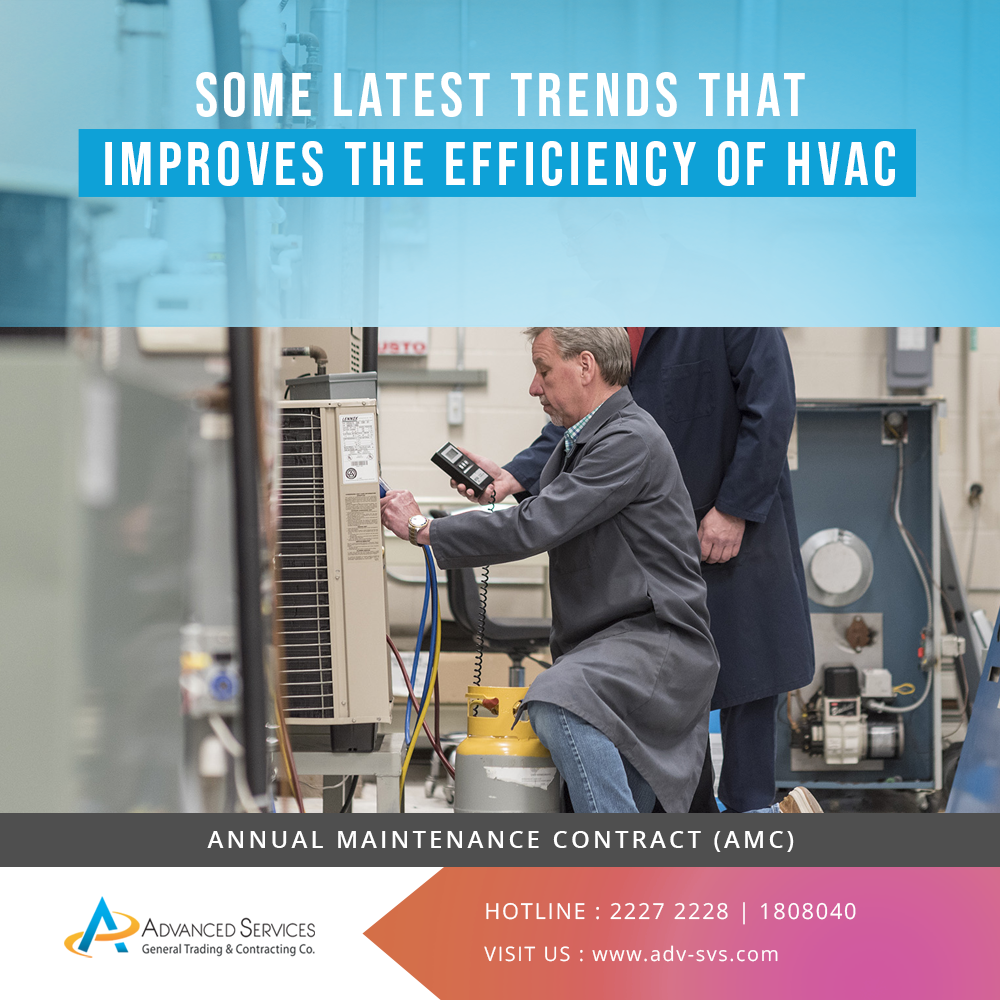It’s the HVAC that has the crucial role to make the indoor comfort of a residence or commercial building paramount, But HVAC is your possibly greater consumer of building’s energy. The trends and technologies are focusing to improve HVAC efficiency in a good way. Thanks to modern technology.

Precision in control has advanced a lot and it’s providing a lot more options in terms of how they want to utilize the unit and space. HVAC technology is becoming more refined, built with better algorithms and able to gather more data.
Here mention the latest trends in the HVAC industry that focuses to improve the efficiency
Smart Controls
HVAC controls are now powered with precise sensors. The censors intelligently control the systems based on the occupancy and the design of the building. Moreover, these are designed to gather more information and identify the level of activity occurring in building and then controlling the unit accordingly.
Take, for example, the CO2 sensors gather the occupancy information to ventilate a room accurately for the number of people. These smart controls are a big asset to energy savings and in the coming years, they are going to get better.
Some pitfalls to avoid when installing smart controls
– Mounting a sensor in an area with restricted airflow.
– Mounting a sensor near a heat source.
– Mounting a sensor sideways.
– Mounting a sensor outside without proper requirements.
Geo Thermal Systems
The advantage of a geothermal system is that the earth itself fuels the geothermal heat pumps, and thus can avoid the use of gas or oil. The system utilizes geothermal energy all year round to heat and cool the space. Though it cost high to install a geothermal system, it pays for itself.
When it comes to efficiency and keeping the comfort in buildings, these systems really restrict the amount of mechanical equipment you are going to have. The usage of renewable energy has grown significantly as people become more and more environment-friendly. When it comes to lifetime operating cost and the maintenance cost having the system will have a huge benefit to you.
Integration
Technology is fast changing so are the things. Things are being integrated to make the functionality more easy and fast. It is true in the HVAC industry as well. The industry is witnessing greater integration of control systems to other building systems, especially the advanced lighting. Take, for example, a sensor in the classroom might be used to control the lighting as well as the operation of the ventilator. For security, access controls can be well used with the HVAC controls.
Variable Speed Controls
Though the units are designed to perform at peak loads, most of the time it operates at part load only. The industry, therefore, is witnessing a trend for variable speed controls.
As most of the units are reasonably oversized, the peak loads are happening only in a few portions of the year. Now you have the right designed systems available that are good at operating in the variable load conditions. The result is higher efficiency and less waste.
Variable Refrigerant Flow Systems
VRF systems allow for an individual level of control, which can be good for your building occupants.
It operates in part load as well and can respond quickly when you’re coming out of set temperature. For example, if the temperature is set back due to lack of occupancy on Saturday, it can return back to normal on Monday morning when employees come back into the building. Are its sounds good isn’t it? As HVAC trends go forward, you might face difficulty to choose the right system that suits your building, if you are looking to upgrade or install a new one. It’s better to rely on the expertise of HVAC providers such as Advanced Services in Kuwait for designing and installing HVAC unit.
